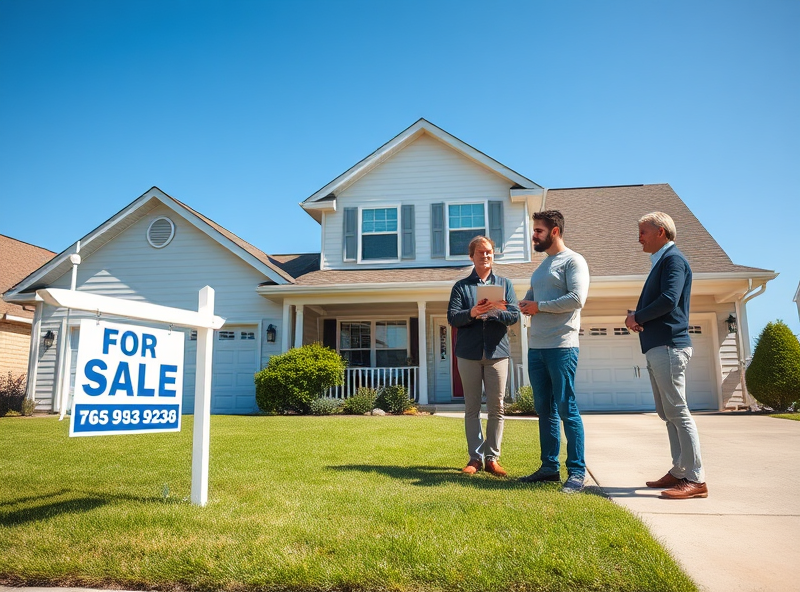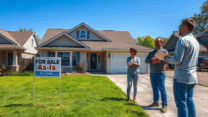
Pricing Your Home Right: Home Pricing Strategies for a Fast Sale in the US

Selling a home in the U.S. can be both exciting and stressful. One of the most critical factors in ensuring a quick and successful sale is pricing your home correctly from the start. As a homeowner, it’s natural to want the highest return on your investment, but overpricing can lead to extended time on the market and eventual price reductions. Let’s explore how to strategically price your home to attract buyers and close the deal efficiently.
Understand Your Local Market
Before setting a price, it’s essential to understand the current real estate market in your area. Is it a buyer’s market, a seller’s market, or balanced? In a seller’s market, demand exceeds supply, and homes tend to sell quickly, often above asking price. In a buyer’s market, there are more homes than buyers, which can drive prices down.
To assess your local market:
– Check recent sales of comparable homes (comps) in your neighborhood.
– Analyze how long similar homes have been on the market.
– Consult a local real estate agent for a Comparative Market Analysis (CMA).
According to the National Association of Realtors (NAR), homes priced correctly from the beginning sell faster and for more money than those that undergo multiple price reductions.
Use Comparable Sales (Comps) Wisely
Comps are one of the most reliable tools for determining your home’s market value. Look for homes that are similar in size, age, condition, and location. Ideally, comps should be from the past 3 to 6 months and within a one-mile radius.
Key factors to consider:
– Square footage
– Number of bedrooms and bathrooms
– Lot size
– Renovations or upgrades
– School district ratings
If your home has unique features, such as a pool or solar panels, adjust your price accordingly. But be cautious—overestimating the value of upgrades can deter potential buyers.
Price for Online Search Visibility
Most buyers start their home search online using price filters. Pricing your home just below a major threshold can increase visibility. For example, instead of listing at $505,000, consider $499,900 to capture buyers searching under $500,000.
Zillow and Realtor.com are among the most visited real estate websites in the U.S., and their search algorithms often prioritize homes that match common price brackets. Being strategic with your pricing can help your listing appear in more search results.
Consider Psychological Pricing
Psychological pricing isn’t just for retail—it works in real estate too. Buyers perceive prices ending in “9” (e.g., $299,900) as significantly lower than the next round number. This small tweak can make your home seem like a better deal.
However, don’t rely solely on this tactic. It should complement a data-driven pricing strategy, not replace it.
Factor in Time on Market
Homes that sit on the market too long often raise red flags for buyers. They may assume something is wrong with the property or that the seller is unwilling to negotiate. According to Redfin, homes that undergo price reductions typically sell for less than those priced correctly from the start.
To avoid this:
– Set a realistic price based on market data.
– Monitor buyer interest and feedback.
– Be prepared to adjust the price within the first few weeks if necessary.
Work with a Real Estate Professional
While online tools like Zillow’s Zestimate can provide a ballpark figure, they often lack the nuance of a professional appraisal or CMA. A licensed real estate agent can offer insights into local trends, buyer behavior, and pricing strategies that maximize your home’s appeal.
Agents also help with:
– Marketing your home effectively
– Staging advice
– Negotiating offers
According to the NAR, homes sold with the help of a real estate agent typically sell for more than those sold by owner (FSBO).
Adjust for Market Conditions
Real estate markets fluctuate due to interest rates, economic trends, and seasonal factors. For example, spring and early summer are traditionally peak home-buying seasons in the U.S., while winter tends to be slower.
Keep an eye on:
– Mortgage interest rates (source: Freddie Mac)
– Local employment rates
– Inventory levels in your area
Adjust your pricing strategy to align with these conditions. In a hot market, you might price slightly above comps. In a slower market, a more competitive price can attract serious buyers.
Don’t Let Emotion Dictate Price
It’s easy to let personal attachment influence your pricing. You may have fond memories or feel your home is worth more due to the work you’ve put into it. However, buyers won’t share the same emotional connection.
Focus on objective data and market trends. Emotional pricing can lead to overvaluation and missed opportunities.
Final Thoughts
Pricing your home right is both an art and a science. By understanding your local market, leveraging comps, and working with a knowledgeable agent, you can set a price that attracts buyers and maximizes your return. Remember, the goal is not just to sell—but to sell smart.
Disclaimer
This article is for informational purposes only and does not constitute legal, financial, or real estate advice. Always consult with a licensed real estate professional or financial advisor before making decisions related to home pricing or property sales. Market conditions vary by location and are subject to change.
Sources:
– National Association of Realtors (www.nar.realtor)
– Redfin (www.redfin.com)
– Freddie Mac (www.freddiemac.com)








답글 남기기